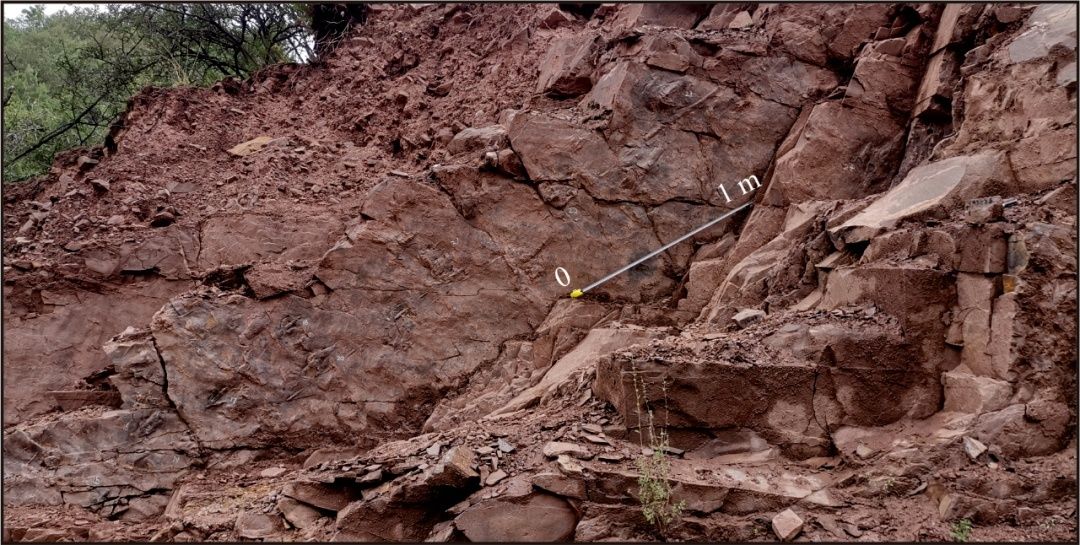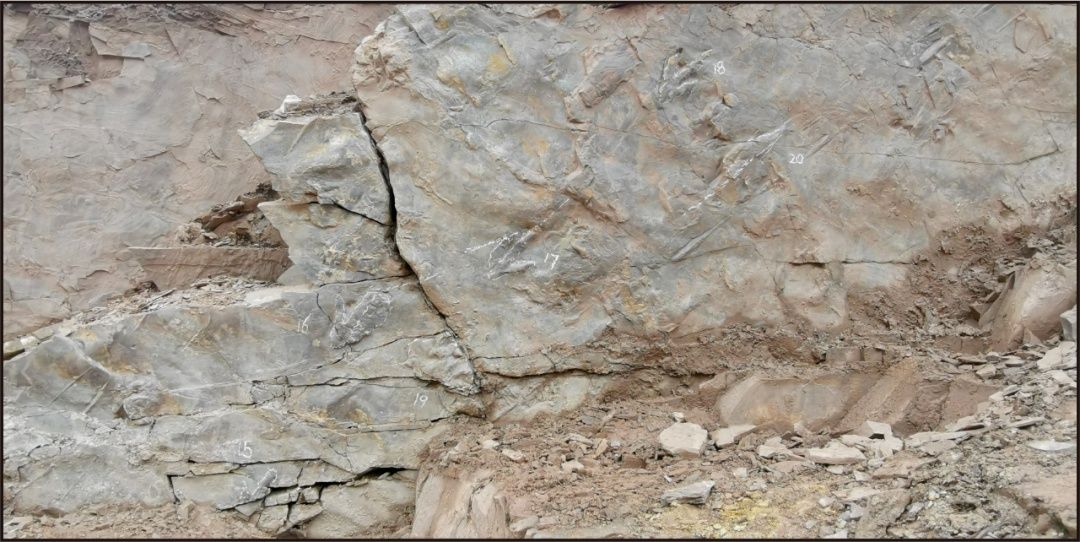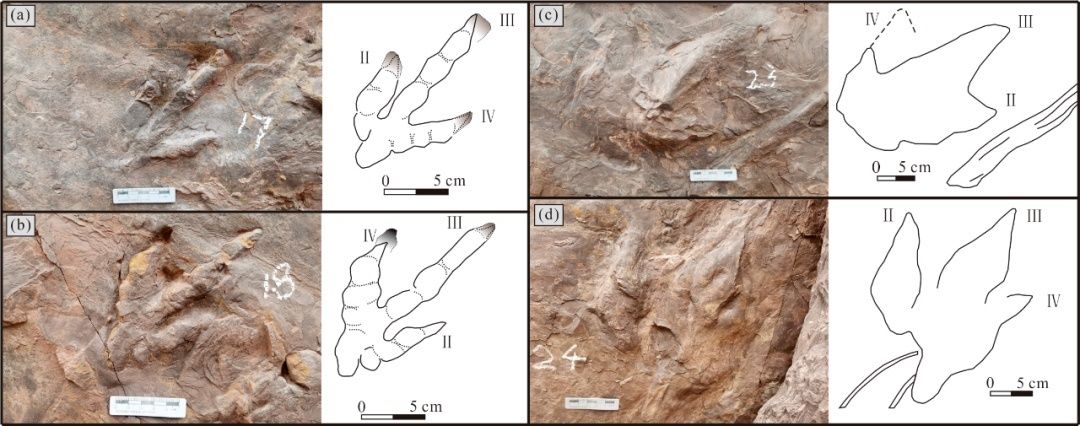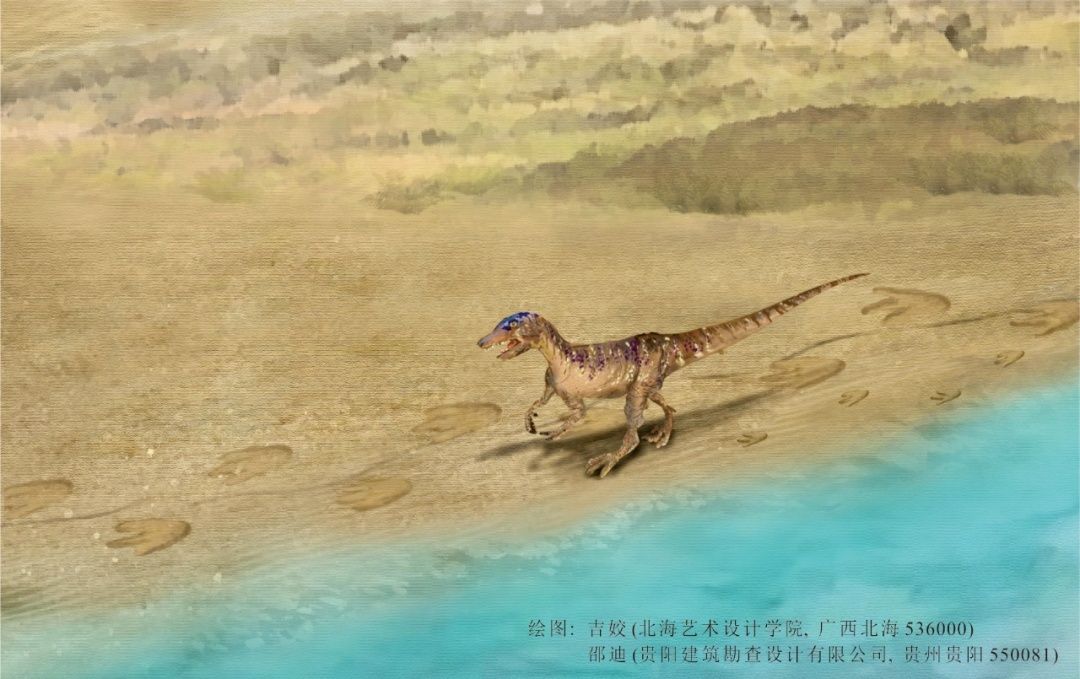New progress has been made in the study of Mesozoic dinosaur tracks in eastern Tibet, according to the Wuhan Geological Survey Center of the China Geological Survey.
The footprints of the first Jurassic theropod dinosaur in Tibet, discovered in Kaluo District of Changdu City, Tibet, have been officially named as Agnetang Stiphosaurus. The related research results were published in the Earth Science, a famous Chinese geoscience journal.
The first fossil of theropod footprints found in Xizang

Level exposure of the Anetang fossil point
It is understood that the fossil discovery site is located in Anetang Village, Ritong Township, Karuo District, Qamdo City. It was formed in the middle Jurassic period about 170 million years ago. The fossils are preserved in the bottom of the rock strata with exquisite convex traces, which are partially exposed due to road construction and slope cutting and the collapse of the rock mass in the later period. Under the careful repair of scientific and technical personnel, they can be fully displayed.

Trace photo of the Anetang fossil site

Photographs of fossil footprints (a-b: Agnetang Stiltosaurus; c-d: Theropod footprints of undetermined species)
“The surface area of the fossil outcrop is about 4m2, and the layer is nearly upright. Four continuous tracks of Agnetang Stiotaposaurus formed a row, and no wakes were found. Footprint length is less than 15 cm, width is about 8cm, length to width ratio is 1.85; The three functional toes had clear pads, sharp claws and similar widths, with a width of about 1.7cm. Toe Ⅲ was the longest with a width of about 12cm. The length of the other two toes was about half that of toe Ⅲ, but toe Ⅳ was slightly longer than toe Ⅱ with a very weak value. Ⅱ Obvious indentation at toe end; The Angle between the two lateral toes is about 50°.”
According to the discoverer Yao Huazhou and Dr. Li Yan-gui from Wuhan Geological Survey Center, the thin toes and sharp claw marks of the footprint fossil indicate that the trackmaker is a carnivorous dinosaur. Its morphological characteristics are closer to the typical type of the footprints of the most common stilbosaurus in China. Because it is the first theropod footprint fossil found in Tibet, it has obvious features and is beautifully preserved. It is of great significance to reveal the features of the potential dinosaur fauna in Tibet and the geological changes of the Qinghai-Tibet Plateau, so the fossil was named “Anetang Stilfosaurus” after the site where it was found.
Paleoenvironmental conditions of Middle Jurassic in Qamdo area
It was perfect for dinosaurs

According to Dr. Li Yangui, the footprints of Stilposaurus are the most common small theropod footprints in the Jurassic period, which were found in contemporaneous strata in the adjacent Sichuan Basin and Central Yunnan Basin. The analysis of the footprint data showed that the body length of the trace-making dinosaur was about 1.3m, and the hip height was less than 0.7m. Surprisingly, on the surface of the same rock layer, a series of tracks composed of 9 continuous large theropod footprints (Theropoda igen. et isp.indet., genus undetermined) and clear wakes were retained, and the wakes showed regular ground wave swing between the tracks. In order to maintain the balance of the body, the tails of theropod dinosaurs usually do not touch the ground, and only under special circumstances, such as crouching, jumping, turning rapidly or slowing down, will leave very short trails. If the trails of theropod dinosaurs appear continuously and regularly, they can only be caused by the conscious behavior of the tracer dinosaur or its own body structure. At present, there are no reports on theropod footprints that can be compared with the preserved contrails, which is a new type. The present research results show that the features of dinosaur footprints in the Middle Jurassic in eastern Tibet are different from those in neighboring areas.
According to Yao Huazhou and Li Yangui, Kaluo District of Qamdo was an ocean 200 million years ago, and then it was transformed into an offshore inland basin due to the gradual uplift of the Earth’s crust. About 170 million years ago, the Qamdo area was dotted with many large and small lakes, and there were rivers running through them. The common cross-bedding, ripple marks and mud cracks are the common lacustrine and fluvial sedimentary structures. According to the analysis of the two rows of trace data, the motion speed of the dinosaur was very low and in a state of slow walking, and there is no evidence of tracking or hunting between the two tracers, they may just pass by the same lake shore. Due to the formation and preservation conditions of footprints, each step of the sediment moisture on the lake beach during the tracing process, the residue of footprints, drying and curing, late sediment filling and consolidation diagenesis, and fossilization is very critical. Different footprints are preserved on the same level, and the time interval between the two types of footprints must not be very long. It also reflects that the paleoenvironmental conditions of the Middle Jurassic in Qamdo area were suitable for dinosaurs to survive.






